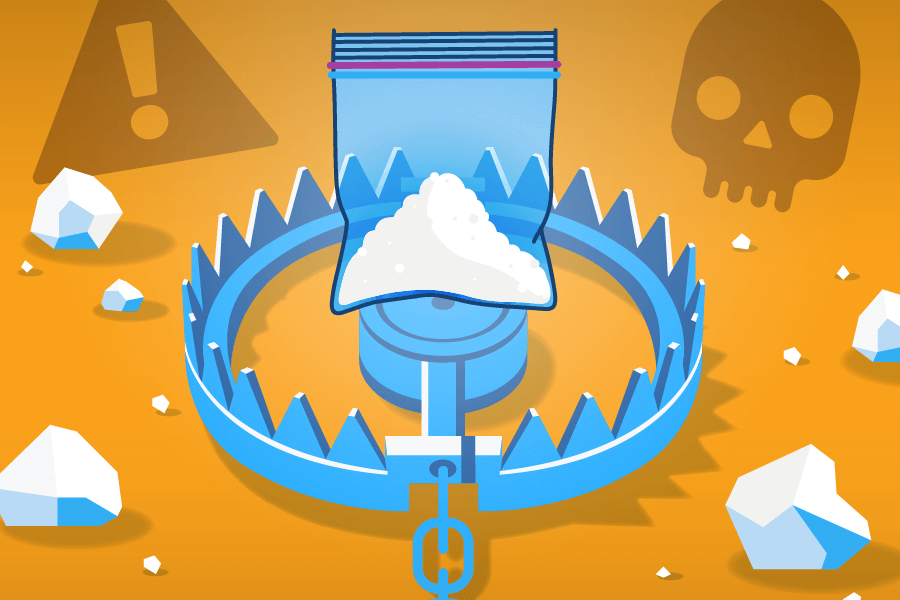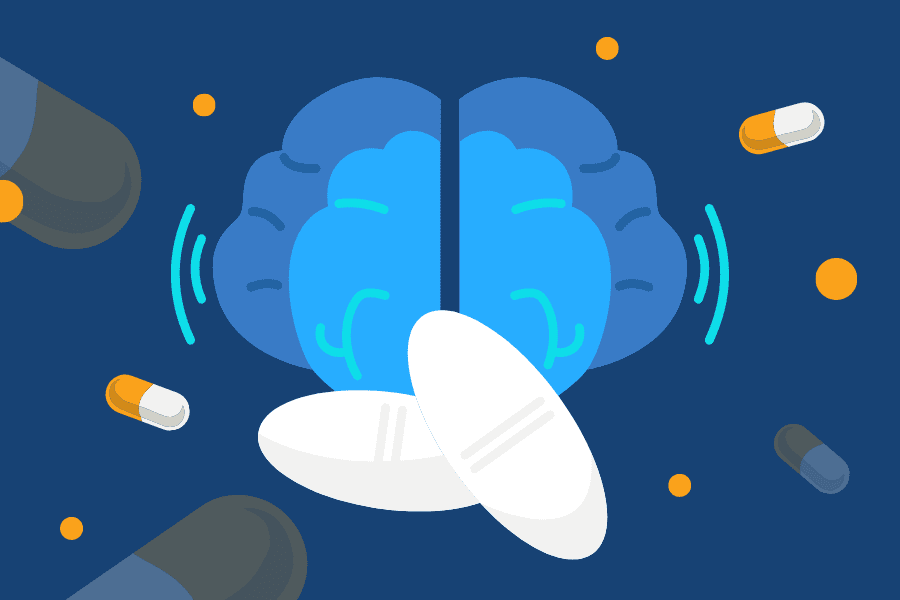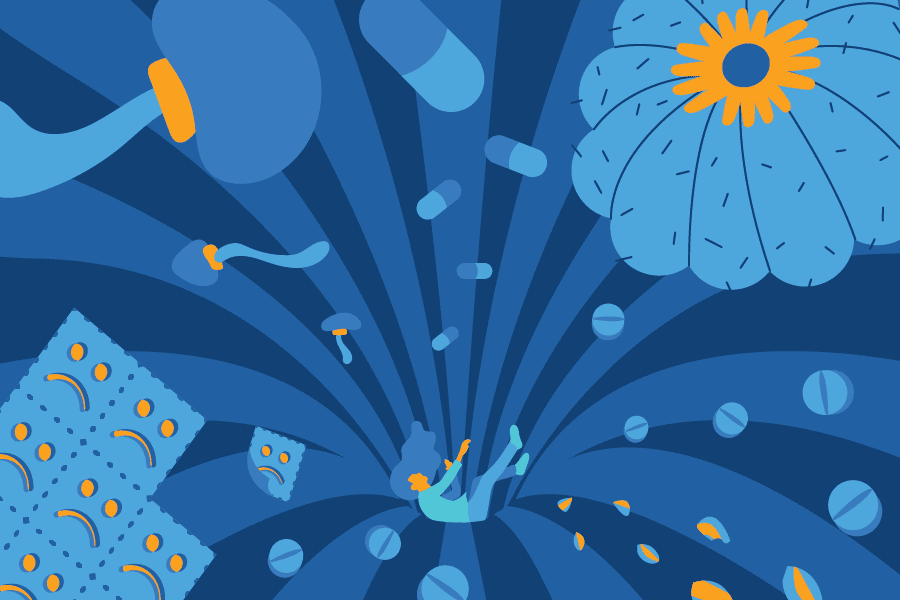Understanding Substance Abuse
Almost all of us use substances. Whether it’s coffee in the morning, a glass of wine at dinner, or a painkiller when we have a headache, we are not unfamiliar with substances that alter our state of being.
Many people are able to employ substances in a way that is beneficial, for their intended purposes, and without detriment.
For some, it can be harder to engage with particular substances in a healthy way. Some struggle so much that the use of a substance can turn into abuse.
The 5th edition of the American Psychiatric Association’s Diagnostic Statistical Manual defines a substance abuse disorder as: “a problematic pattern of using alcohol or another substance that results in impairment in daily life or noticeable distress.”

Complications of Teen and Young Adult Substance Use
For teens and young adults, it can be even more of a challenge to engage with substances. Peer pressure, brain chemistry, and the stress of life transitions can all lead young people to reach for something to alter their experience of reality. Many find substances.
The National Institute on Drug Abuse’s “Monitoring the Future Study” focuses just on teens and in 2012 they surveyed more than 46,000 teens in 8th, 10th, and 12th grades. They discovered that 13% of 8th graders, 30% of 10th graders, and 40% of 12th graders say they used a drug at least once in the past year.
To some, these numbers may be overwhelming. To help understand substance use, abuse, and addiction, we’ve addressed some common questions below.
If you or your loved one might be struggling with a substance, it’s important to seek support early to help minimize any long term negative effects.
Consequences of Substance Abuse or Addiction
Different substances have different effects on our brains, bodies, nervous systems, and behavior patterns that can be incredibly detrimental, long lasting, and difficult to change. Common physical effects include damage to vital internal organs and the nervous system.
Additionally, abusing substances can result in a predictable range of negative behavior patterns.
The behavior patterns that often arise as a result of substance abuse can cause academic, work, and social relationships to be damaged as much as one’s physical body. Lack of impulse control, poor judgment, and erratic emotional behavior are all common.
The younger the user, the more intense the effects due to the fact that their brains are still growing. According to current neuroscience research, young human brains are fairly “plastic”, meaning the structure of the brain is malleable and can change easily, until about 25 years of age.
After that, it can be more difficult to change the neural pathways.
Imagine it like a city until 25, the city planning and roads are being laid out, determining how the city is organized and where the buildings will go. Once those roads are installed, and buildings constructed in relation to them, it’s a lot harder to change the path of the interstate if need be.
If a young person’s growing brain is introduced to the patterns of instant gratification, craving, or inability to accurately assess risk, (all associated with drug use) it will be harder to change those patterns later on.

Common Substances Teens & Young Adults Use
There are more substances available today to young people than ever before. Illicit (illegal) substances abound and legal prescription drugs are being used more and more. In 2015, the Monitoring the Future Study released data concerning drug use for American High School Seniors.
The Difference Between Abuse & Addiction
Many addiction specialists use a continuum when considering substance use:
Experimentation > Use > Abuse > Addiction
A narrative example of this spectrum might be:
- 1. Experimentation A young man hears that beer helps people relax, so he drinks one.
- 2. Use He finds that he does feel more relaxed and less worried after drinking, so he starts to have a beer on a regular basis.
- 3. Abuse He’s feeling stressed at work and wants to relax more, so he begins to drink 4-6 beers per evening.
- 4. Addiction The relationship with alcohol gets to the point that he can’t stop drinking, even when he starts missing work or fighting with his loved ones.
This narrative intensifies significantly when the user is a teen.
Alcohol in any amount at an age when the brain is still growing can be detrimental (imagine the urban planning for a city only allowing roads to be 4 blocks long) and therefore experimentation or use would be considered abuse, as the substance is abusing the user.
Teen and young adult years are typically a time of experimentation and some substances, such as inhalants, can be fatal on the first use.
Drug Abuse can also be defined as any use of a substance not for the intended purpose. An adult taking a painkiller prescription left over from a surgery two years ago would be considered abuse.
Addiction is marked by changes to the functionality of the human brain manifesting as marked behavioral differences:
“inability to consistently abstain, impairment in behavioral control, craving, diminished recognition of significant problems with one’s behaviors and interpersonal relationships, and a dysfunctional emotional response.” (From the American Society of Addiction Medicine’s definition of addiction)
Why Young People Use Substances
There are many theories on why teens and young adults use and abuse substances. Some common factors include:
- Peer pressure
- Experimentation
- To perform better in school
- To self-medicate
- Boredom
- Rebellion
- Genetic predisposition
- As a response to trauma
- To emulate an adult or glorification from popular media
Understanding Substance Use
The above motivations often speak to fundamental human needs: affection, identity, freedom, etc. These needs are valid. However, fulfilling them in an unhealthy way can lead to long term detriment.
If there is concern for yourself or your loved one, see if you can determine the need underneath the behavior. Each individual has a different reason for engaging in substance use and the first step to supporting them is understanding their use.
Positives to Substance Use
It’s also important to remember that there are positives to many substances, otherwise people generally wouldn’t use them. Many people enjoy the feeling of a drink in their system; inhibitions are lowered, for those with social anxiety, sometimes interaction is easier.
Teens and young adults often claim that smoking marijuana can increase their ability to connect with music or think about a situation from a different angle.
The key is understanding whether the negatives outweigh the positives, what the cost of the high really is, and if it can be achieved another way.

Seeking Help For a Substance Problem
Approach the inquiry with as much open-mindedness, curiosity, and lack of judgment as possible. If you give respect in a conversation, you’re more likely to receive respect. Ask honest questions and make accurate observations:
- How often is the substance used?
- How long has the person been using?
- What purpose does the use serve?
- What does the support network of the person using look like?
Substance Abuse Treatment & Drug Counseling
If you are feeling concerned, reach out to a professional who can answer your questions and offer informed support. There are a plethora of organizations dedicated to help teens and young adults with substance abuse issues like the Substance Abuse and Mental Health Services Administration (SAMHSA).
Substance abuse and addiction in someone you love, especially a young person, can be frightening. Find support for yourself and your loved loved one early on; it’s the best investment you can make.


Online Treatment Programs
Our virtual IOP program offers the same programming that we offer in person, all online – this is ideal for those who live too far to drive to an addiction center, have transportation issues, or have health concerns that make in-person treatment challenging.







